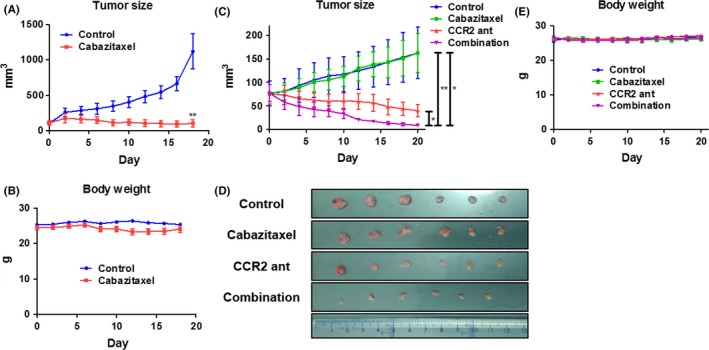Figure 6.

The CCR2 antagonist restored the sensitivity to cabazitaxel in vivo. A, After 2 wk of acclimatization, 2 × 106 DU145 cells were implanted subcutaneously in SCID mice. The control group was intraperitoneally injected with 20 μL of DMSO, and the cabazitaxel group was intraperitoneally injected with cabazitaxel weekly (days 0, 7 and 14) at a dose of 7 mg/kg diluted with 20 μL of DMSO (n = 5). The tumor size was measured every other day using a caliper. B, Body weight was measured every other day using a scale. C, After 2 wk of acclimatization, 2 × 106 DU145‐TxR/CxR cells were implanted subcutaneously in SCID mice. The following groups were compared: control, cabazitaxel alone, CCR2 antagonist alone, and a combination of cabazitaxel and CCR2 antagonist. The control group was injected with 20 μL of DMSO. Cabazitaxel was injected weekly (days 0, 7 and 14) at a dose of 7 mg/kg, and the CCR2 antagonist was injected every other day at a dose of 50 μg/kg (n = 6). The left, middle and right bars on the right side of the graph illustrate the comparison between the combination group and the CCR2 antagonist group, the cabazitaxel group and the control group, respectively. The tumor size was measured every other day using a caliper. D, On day 21, the mice were killed and the tumors extracted. E, Body weight was measured every other day using a scale. Data are shown as means ± SEM
